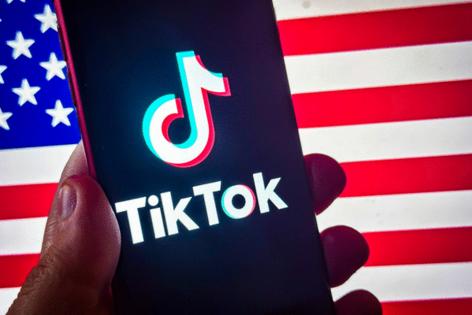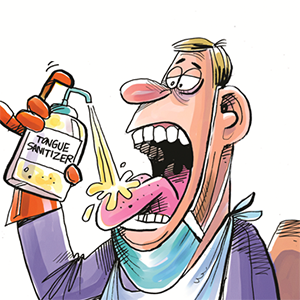Commentary: You want to leave TikTok? Good luck
Published in Op Eds
Trying to delete TikTok starts with a tap and ends with second thoughts. Everything in between feels tedious as your decision is repeatedly challenged.
Although you insist that your decision is permanent, the app still prompts you to review all your data, click through another confirmation screen, and consider deactivating your account instead. An attention span shaped by years of doomscrolling is ill-equipped for this kind of persistence, and by the time you are enticed with account deactivation, your mind already craves a dopaminergic hit.
Most teenagers who use TikTok are too hooked to consider deleting it, let alone to endure the gauntlet of confirmation screens designed to make them hesitate. Even if they succeed, users are informed that there is a 30-day grace period to recover their “deleted” account. Offering a month-long countdown to relapse forces children to weigh the value of mental health recovery against the lure of account recovery.
This deliberate tension is amplified by addictive algorithms devised to prevent users from leaving.
According to a 2022 study published in Frontiers in Psychology, TikTok’s algorithm helps make it the most addictive social media platform: Not only does the algorithm tailor content to general interests, but it also infers a person’s particular moods in real time as it quantifies user activity—video replays, like counts, and even swipe speeds—into data that is retained indefinitely.
Even deleting your TikTok account does not mean your data disappears. According to TikTok’s privacy policy, the company retains metadata, behavioral analytics, and messages “as long as necessary,” and acknowledges that it may share this data with law enforcement, public authorities or other agencies if such use is legally required or “reasonably necessary.”
Concerns remain that this data could be used for China’s intelligence purposes, considering China’s 2017 National Intelligence Law, which compels private entities and individuals to cooperate with “national intelligence work.” The Chinese government could use TikTok’s data to profile American users, tracking behavior and politics to influence young people’s opinions.
TikTok’s reach is extensive. According to the Pew Research Center, it’s the second most-used social media platform among U.S. teens, trailing only YouTube. About 63% of teens aged 13 to 17 report using TikTok, with 57% using it daily and 16% admitting they are on it “almost constantly.”
But what’s especially striking is the difference between American and Chinese use. American teens average 90 minutes a day on TikTok, while Chinese teens are capped at 40 on a youth-specific version called Douyin. The content differs just as sharply—Douyin shows videos encouraging studying, honoring elders, and making healthy lifestyle choices, while the U.S. version promotes impulsive, image-obsessed, and often explicit feeds.
This isn’t surprising given that the Chinese government commands ByteDance and has the “ability to control the recommendation algorithm”—meaning it can manipulate the algorithm to affect U.S. users as it pleases.
The next generation is conditioned through this platform, and it is up to parents and leaders to stop it—immediately.
So far, though, America has struggled to leave TikTok, both personally and politically. Congress fulfilled its duty by passing the Protecting Americans from Foreign Adversary Controlled Applications Act, requiring ByteDance to divest TikTok to a U.S. company or face a nationwide ban.
The Supreme Court upheld the law unanimously, ruling it did not violate the First Amendment. However, China’s communist government continues to block the app’s divestiture to a U.S. owner, and the U.S. administration has delayed enforcement of the law.
This delay mirrors a broader national reluctance: We see the threat but still hesitate to let TikTok go.
Yet it’s nonnegotiable that American companies—which could face multi-billion-dollar fines for illegally hosting TikTok—act decisively to delete the Chinese Communist Party’s influence over American children. The longer we wait, the higher the financial liability for these companies, and the greater the risk to our national security and the well-being of our youth.
ByteDance is reportedly developing a U.S.-specific version of the app, but the core issue remains—that is, unless it severs ties to the data practices and algorithmic designs that undermine user autonomy and prevent effective government oversight.
Keeping TikTok carries risks. Removing it requires resolve, and resisting relapse is difficult. Download patterns suggest that millions cycle between uninstalling and reinstalling.
While teenagers waver, adults must lead by example and delete their accounts. If children cannot—or will not—parents must take responsibility.
America remains stuck with TikTok, addicted at home and obstructed abroad. Yet Beijing’s refusal to relinquish control is inspiring growing frustration.
According to Howard Lutnick, if China continues to block the sale of TikTok, it could “go dark” in the U.S. But President Donald Trump has affirmed that he doesn’t care if TikTok goes dark, making it clear that he isn’t going to let China use the app as leverage in trade talks.
This gives leaders who once pushed to ban TikTok a renewed chance to act. Protecting America’s youth and digital sovereignty cannot wait.
____
Autumn Dorsey is a Visiting Research Assistant in the Center for Technology and the Human Person at The Heritage Foundation.
_____
©2025 Tribune Content Agency, LLC.
























































Comments